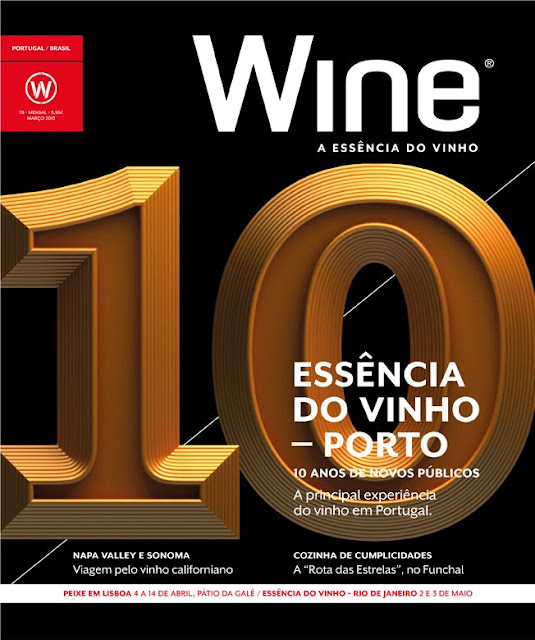Portugal VS France. In the wine world, France and Portugal are big competitors, even if silent to the general public. Big coorporations look to export, to improve, more and more. Therefore, the mix of grape varieties in one country due to settlements and opportunities is a reality? But is it the way? The right way? This extract of an opinion article written by Paul J.White, a
North American wine critic, with profound knowledge in Portuguese wines and
based in New Zealand for WINE magazine, in March 2013 exposes the opposing
sides in the wine business, a fight not known by the general public. It raises very important questions. Should grape varieties be restricted to the country
of origin? How can they affect an entire industry? And how important is the history, the tradition of a country to its wine?
If Portuguese people want Viognier, well, they better look for it in southern France, where it is abundant, good and cheap. You won’t find me drinking Australian wine to understand the real potential of the French Touriga, the Encruzado or Sercial.
As you
probably already know, I believe that choosing to plant French grape varieties
over Portuguese ones is a big mistake. Isn’t it better to focus on the
varieties that helped the country evolve and try elaborate the best possible
wine from them? That being said, we need just to pour the wine into the glasses
of consumers and let it express for itself. I admit that it is easier for me to
state it than to those that must make a living off the wine and sell it.
The french
varieties are planted mainly in Lisbon, Tejo, Bairrada and the region of
Alentejo. The reasoning is complicated. The first three regions, with a strong
Atlantic influence, have fresher climates, which make the growth and consistent
ripening of the grapes harder, so they decide to adopt other varieties, easier to
cultivate and sell. The Portuguese response to the New World, Alentejo boomed
out into the market in more recent years. With the exception of a few
traditional producers, the majority lacks a long record of autochthonous
plantations of grape varieties, therefore they possess a greater flexibility
choosing on what to plant. If some of the main problems in Alenjeto reside on
its hot climate, in which the grapes sometimes over ripen, amass excessive
alcohol and lack some of the natural acidity, the experimentation with french
grape varieties ended up resulting in the discovery of solutions to tackle
these problems. Yet, the rise in french grape varieties has also created a
problem of identity in all of these regions.
Douro, Dão, Vinho Verde and Madeira have strong
personalities directly related to the grape varieties of the region and the
traditional style of their wines. However, what about the regions I mentioned
before? Where do their identities reside? How are their real types of wines? Do
they truthfully express themselves in Portuguese, in Portuguese with a French
accent or in French with an emphasis on the Portuguese, or even so, simply, in
bad French?
Usually I get
two main reasons to explain the use of French grape varieties in Portugal. One
suggests a tendency in the Portuguese market for the French grape varieties of
the moment. One other defends that the foreign markets can’t understand
Portuguese varieties, reason why it’s easier to sell wines made up from the
familiar French varieties. I’m not convinced. It’s understandable that
Portuguese consumers want to try the flavors of the moment in San Francisco,
London, Buenos Aires or Hong Kong. If Chardonnay, Pinot Noir, Viognier and
other French grape varieties are standard there, why couldn’t the Portuguese
try them as well? It’s only fair. But it raises some concerns. Will Portugal be
able to produce French varieties as good and interesting as the ones cultivated
in their country of origin? (…) Yes, all is possible but from my experience
Portuguese wines made from French grape varieties rarely live up to the quality
of the ones made in other parts of the world.
(…)
About the
other reason I hear for the opting by French varieties?... I’ve been saying
that American, Canadian, British, Scandinavian and Asian consumers don’t know
the Portuguese grape varieties and even have some difficulty pronouncing them,
for which they end up opting for the more familiar French varieties. But that
doesn’t explain why those same consumers have gotten used to search for wines
from grape varieties such as the Italian Fiano or Aglicano, or the Spanish
Mencía and Albariño, during the last decade. If today they are among the most
renowned wines in the world, five years ago they were virtually unknown.
(…)
The honest
truth is that for every grapevine planted in Portugal with a French grape
variety one other had to be torn off or replaced. Which leads me to point out
the solution I prefer. Why plant French grape varieties in Portugal when there
are so many other good native varieties that can yield much more result?
(…)
What if the
Portuguese grape varieties were to be widely spread throughout the country,
regardless from the regions of origin, being tested at other locations? That
would be much better than trying to follow the already exhausted obsession of
the New World for French varieties. Instead of looking to copy the tendencies
with a predictable end, wouldn’t it be better if we anticipated the ones to
come?
page 12-14 of Wine maganize, March 2013 edition

No comments:
Post a Comment